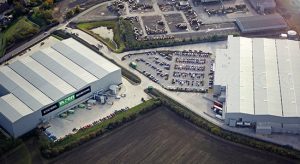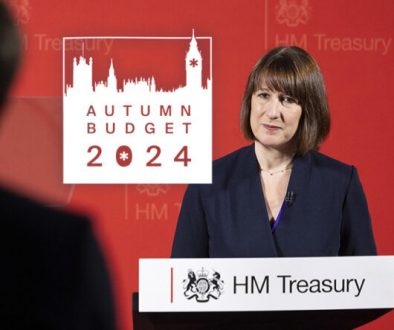Last week Neil Higson attended the Industrial and Logistics Update in Birmingham, hosted by the IPF at the RICS offices at Colmore Row. The update was insightful and provided interesting debate.
In summary, the outlook is cautiously optimistic for the sector and H2 2023 looks to be a promising one.
To coin a phrase or status update from investors over the past 6 months has been, ‘not wanting to catch the falling knife’, providing hesitancy to invest which led to a decline in H2 2022 in comparison to a very hot H1 2022.
2022 was the third best ever year in occupational take up for the industrial sector, but slowed in H2 2022. H1 2022 was the best ever H1 on record. Total take up in amounted to 47.99m sq ft.
Last year was also a game of two halves. Investment sales hit £4.8bn in H1 2022, with ‘just’ £2bn in H2 2022. Capital markets are stabilising now. H1 2023 will see through the latest tranche of transactions to completion and investors will be eagerly anticipating where yields stabilise to, to allow a descent on the market in Q2 through to Q4 2023.

Prime yields fell by up to 100 to 200 bps towards 2023. In comparison, prime yields declined by 300 bps in the global financial crisis. Have we therefore now reached the bottom? Is it time to dust down and re-open the door?
We are all getting immune to the Permacrisis and recent inactivity for some, cannot remain constant. There is lots of ‘dry powder’ looking at real estate as an investment. Capital is returning. Energy, food and inflation forecasts are improving downwards, providing macro stability to a degree. Any recession likely is to be mild.
Consumer confidence is an interesting one. It seems that most consumers are negative about the macroeconomy, but positive about their own personal situation. Occupiers are less negative, compared with developers, agents and investors.
UK industrial and logistics occupational requirements are normalising. H2 2022 requirements imply a take up level of circa 5m sq ft to 9m sq ft per quarter for 2023, therefore, a circa 30m sq ft to 35m sq ft take up forecast in the UK for 2023.
The 10 year vacancy rate in the UK is an average of 7%. Vacancy now in the UK is 3.94%. Vacancy forecasts for a ‘Doomsday’ scenario is set at 7%, whilst the ‘Upside’ scenario is 2%. So, a ‘doomsday’ scenario is similar to the 10 year vacancy rate in the UK (not bad) and the current position and the upside positions are attractive.
Grade A supply is now lower than in 2019/2020. There is 22m sq ft of speculative space being developed for 2023, going in to 2024. Reports suggest that 8m sq ft of this is already pre-let or under offer, whilst 3.9m sq ft is yet to start construction and with no date set.
Forward funding deals were pulled or paused during 2022 due to the rising interest rates and higher cost of debt. Availability of materials and rising build costs were also contributing factors. It took some developers over 40 weeks to have industrial doors delivered to site.

During 2022, 22% of take-up was second hand accommodation, whilst build-to-suit was highest at over 50%. New build speculative was around 15%. There is now less build-to-suit opportunities available and speculative will rise BUT second hand may perform better.
Interestingly, 2022 saw the highest amount of manufacturing related businesses taking space in the UK. Linked to this could be that China labour costs are up by 250% since joining the World Trade Organisation. It is now cheaper to hire a fork lift truck driver in Poland than it is in China. Near shoring, or ‘friend shoring’ is taking place with allies of different countries to source cheaper products and labour where possible. Will manufacturing take up continue to escalate in the UK during 2023/24?
With a lack of stock available in the pipeline to supply the demand, it is likely that in 2023 and through to 2024, second-hand industrial accommodation will be a good performer. This is a sub-sector that should see rental growth due to a supply and demand imbalance and refurbishment of existing assets to progress with ESG requirements from investors, developers and occupiers alike, will lead organically to a rise in rents due to an improving specification.
The lack of new build coming forward will allow the second hand market to benefit. The multi-let sector should also benefit due to the rising build cost for the SME multi-let developments. Rents in the North West for multi-let assets have been achieving double digits, which is an opportunity in the sector when looking at existing multi-let assets that may just require refurbishment and asset management to simply add value.
Industrial land costs in places throughout the UK have since halved or less since H1 2022, which should enable new development to take place, but this needs to be in sync with favourable build costs and likely estimated rental value (ERV) for an opportunity.
Overcoming volatility in the industrial and logistics sector relates to taking on ESG or not, within a development. Aligning an investment strategy to ESG principles will futureproof an asset, and safeguard against headwinds faced going forward in the sector.
It is easy to do nothing, rather than to do something.
The press didn’t help in 2022 nor are they trying in 2023.
The Telegraph came out with one headline, ‘Amazon to shed UK warehouses after worst annual loss on record: Review of operations comes amid major hit to online spending since pandemic’
Just to break this down. To start with, Amazon expanded massively (temporarily) during the pandemic with employees, to cope with the demand from online sales. The ‘1,000’s of jobs to be lost’ are mainly temporary staff and also HR/Admin. The pandemic sales levels have naturally declined now that people have freedom of movement, so not all staff can be retained – but some are and are being re-trained.
What the press fail(ed) to recognise is that the three sites that Amazon are coming out of total 1,162,231 sq ft. However, the two new units that they are moving to total 2,013,766 sq ft. They are taking more space. The new sites are more modern logistics facilities that will equally be more efficient for the Amazon business operation. This to me seems like good news, and not bad news – right?
The North West enjoyed some sizeable transactions during 2022, including the Aviva funding deal of the Iceland Distribution Centre at Omega, Warrington at £90m. Goldman Sachs/Canmoor JV funded the super shed over in Leyland at Connect 6 which will be leased to Victorian Plumbing, for c£70.8m. Greater Manchester Pension Fund were busy acquiring sites at Kingsway Business Park and Middleton, totalling a spend of around £108m. In December, Leftfield Capital acquired the Farmfoods ‘Super W’ shed at Appleton Thorn for £32.1m / 4.96% net initial yield, in return for a 25 year lease term.
To conclude, the overall fundamentals for industrial and logistics remain strong, with structural tailwinds, very low vacancy rates, ongoing demand from third-party logistics operators and now manufacturing related businesses also, and still room for growth.
AOB
Wildbrook continue to advise investor clients on the acquisition and disposal of industrial and logistics assets, with a current pipeline of sales and assets under offer.
We will not be contemplating, nor working a 3 or a 4 day week.
Wildbrook currently have a 100% sale success and are constantly looking for new instructions.




